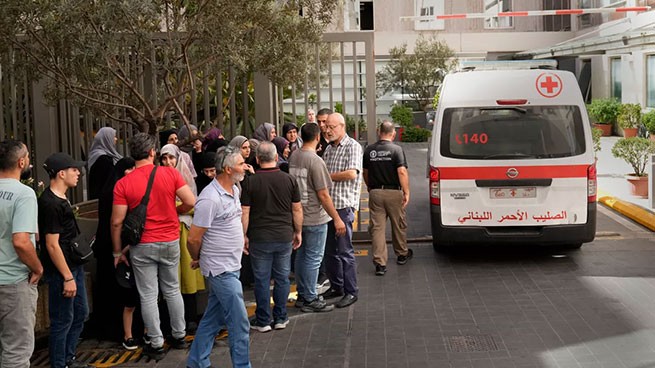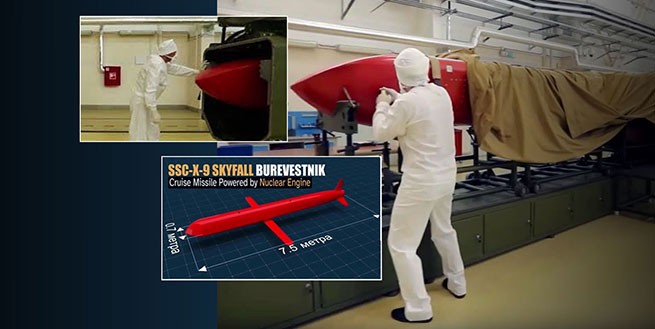American researchers have identified a possible launch site for the 9M730 Burevestnik missile, a new Russian nuclear-powered missilewhich promises practically unlimited flight range and the ability to evade air defense systems.
Researchers analyzed satellite images from Planet Labs taken on July 26 and identified a possible missile deployment site in the area of the Vologda-20 nuclear warhead storage facility, located 475 kilometers north of Moscow.
I've been at it again. Russia is building a deployment facility likely for the operation of the Burevestnik nuclear cruise missile at a nuclear warhead storage facility outside Vologda. https://t.co/XoOFeCFbup
— Decker Eveleth (@dex_eve) September 2, 2024
According to Decker Eveleth, an analyst at the research organization CNAthe image shows nine launch pads under construction. They are arranged in three groups and surrounded by earthen ramparts, which should protect against attack or from detonation at one of the pads as a result of an accidental explosion at another.
The earthen ramparts are connected by roads to buildings that Eveleth believes will service the missile and its components, as well as to a complex of five bunkers for storing nuclear warheads. Eveleth believes the site is intended “for a large, fixed missile system,” and he says the only other project of its kind in Russia on this scale is Burevestnik.
Eveleth's assessment was echoed by researcher Jeffrey Lewis of the Middlebury Institute of International Studies, who said the likely location of the Burevestnik suggests that Russia is moving forward with the project after a series of tests in recent years.

Another researcher, Hans Christensen of the Federation of American Scientists, also suggests that the images show launch pads and other objects that could be associated with Burevestnik, but notes that he cannot give a definitive assessment since Russia does not typically place missile launchers near nuclear warhead storage.
Several other researchers also believe that Moscow typically stores nuclear warheads for land-based missiles far from launch sites. But placing Burevestnik near Vologda would allow the Russian military to store nuclear-tipped missiles in nearby bunkers, making them available for rapid launch, Lewis and Eveleth say.

New information confirms that Russia is moving quickly to rapidly develop the weapon. One of the main concerns is whether Burevestnik can reach its promised range without causing a radiation leak over Russian territory. If Russia successfully develops the Burevestnik, it will have a weapon with unlimited range, capable of hitting targets all over the planet.
So far, all indications are that the weapons will be deployed on sea and air launch platforms, while any clusters deployed within mainland Russia will use conventional rocket engines until they leave Russian territory.
- Putin spoke about the development of the Burevestnik cruise missile in 2018 during his address to the Federal Assembly. He said that it was a “low-observable cruise missile carrying a nuclear warhead, with a virtually unlimited range” and “an unpredictable flight trajectory.” The Russian Defense Ministry soon published a video of the test.
- The American think tank Nuclear Threat Initiative, citing US intelligence data, wrotethat from 2017 to 2019, Russia conducted at least 13 tests of the Burevestnik, but only two of them were “partially successful.” In August 2019, an explosion occurred at a test site near Severodvinsk in the Arkhangelsk region, killing seven employees of Rosatom and the Ministry of Defense. Researchers and media assumedthat it was the Burevestnik missile that exploded. The Defense Ministry reported that the explosion happened during testing of a liquid propellant jet engine.
- In October 2023, Putin announced that Russia had conducted the “final successful test” of the Burevestnik nuclear-powered cruise missile. At the same time, New York Times journalists, who studied satellite images, concluded that Russia was preparing to test the Burevestnik near the Pankovo test site on the Novaya Zemlya archipelago or had already tested it. This was indirectly evidenced by the equipment on the launch pad, the removed weather shelter, and a notice from Russian aviation authorities recommending that pilots avoid the “temporarily dangerous zone” over part of the Barents Sea and several kilometers from the launch pad.







More Stories
Democrats reject Trump's proposal to require voters to show proof of US citizenship
Woman's Desperate Fight With Python Ends With 4-Meter Snake Defeated (Video)
By refusing to pay the fine, Orban could lose some of the funds allocated to him by the EU